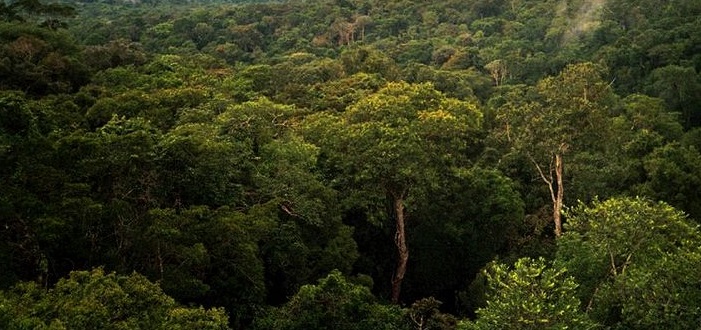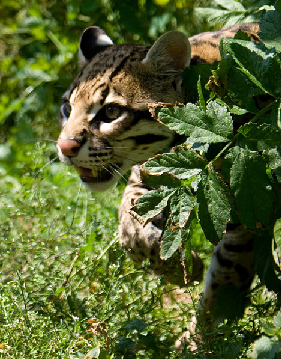
Interactions
Linnaeus’s two-toed sloths have many interactions with other species, most of which are parasitic. These parasites consist mostly of arthropods, including biting flies, triatomine bugs, ticks, mites, and moths. The moths, in particular chrysaugine pyralid moths, live in the sloth’s fur for mostly all of its stages of life. These arthropods survive off of rainwater maintained in the fur and off of sebaceous secretions (Adam, 1999).
Another relationship that the sloths have with an organism is the
mutualistic relationship between algae. The two primary species of algae
who share in this relationship are Cyanoderma choloepi and Trichophylus.
The sloths provide a home and nutrients from the rainwater in the fur
for the algae, while the algae provide the sloths with a greenish tint
to their fur, which acts as camouflage against predators, concealing the
sloth in the green foliage of the tree canopy. Choloepus didactylus
also benefits from this arrangement by receiving nitrogen produced by
the algae. The nutrient is taken into the sloth’s body either
through diffusion through the fur and skin or by the sloth simply
licking its fur (Adam, 1999).
Since Choloepus didactylus primarily eats vegetation,
they share a mutualistic relationship with bacteria, which reside in
the sloth’s stomach. The sloths provide a home and nutrients while the
bacteria break down the tough cellulose and structural carbohydrates
found in plant tissue (Heymann, 2011).
 As mentioned in the habitat page, pumas, ocelots, marguay, jaguars, and
harpy eagles all prey upon the sloths (Adam, 1999; Delibes et al.,
2011). Linnaeus’s sloths also share their habitat with Bradypus
variegatus, phyllophagus monkeys, and other herbivores that live
primarily in the trees and have a relatively similar diet. The shared
food interests results in competition for the vegetation on the trees,
including shoots, leaves, and fruit (Adam, 1999).
As mentioned in the habitat page, pumas, ocelots, marguay, jaguars, and
harpy eagles all prey upon the sloths (Adam, 1999; Delibes et al.,
2011). Linnaeus’s sloths also share their habitat with Bradypus
variegatus, phyllophagus monkeys, and other herbivores that live
primarily in the trees and have a relatively similar diet. The shared
food interests results in competition for the vegetation on the trees,
including shoots, leaves, and fruit (Adam, 1999).
The relationship between Choloepus didactylus and humans is fairly
nonexistent. Since the sloths are generally innactive and ellusive, they hardly ever
come into contact with
humans.
Poaching and hunting of sloths does not occur; in fact, in many South
American countries it is considered a taboo to kill a sloth. Humans are
however taking care to
conserve the habitat of the creature (Adam,
1999).
However, an unusual feeding habit of the two-toed sloths has
recently been observed that provides a small relationship between sloths
and humas. The sloths have been found eating the fecal matter out of
human latrines. There are three running hypotheses to explain why the
sloths would descend from the safety of their trees to eat the human
fecal matter:
1. The sloths are trying to eat the larvae that are growing in the
manure.
2. The sloths are trying to get nutrients from the manure.
3. The sloths are trying to get salt and minerals from the manure.
Due to deforestation and the building of human civilization closer to
the forests where Choloepus didactylus lives, it is likely that these
incidents will occur with more frequency (Heymann, 2011).